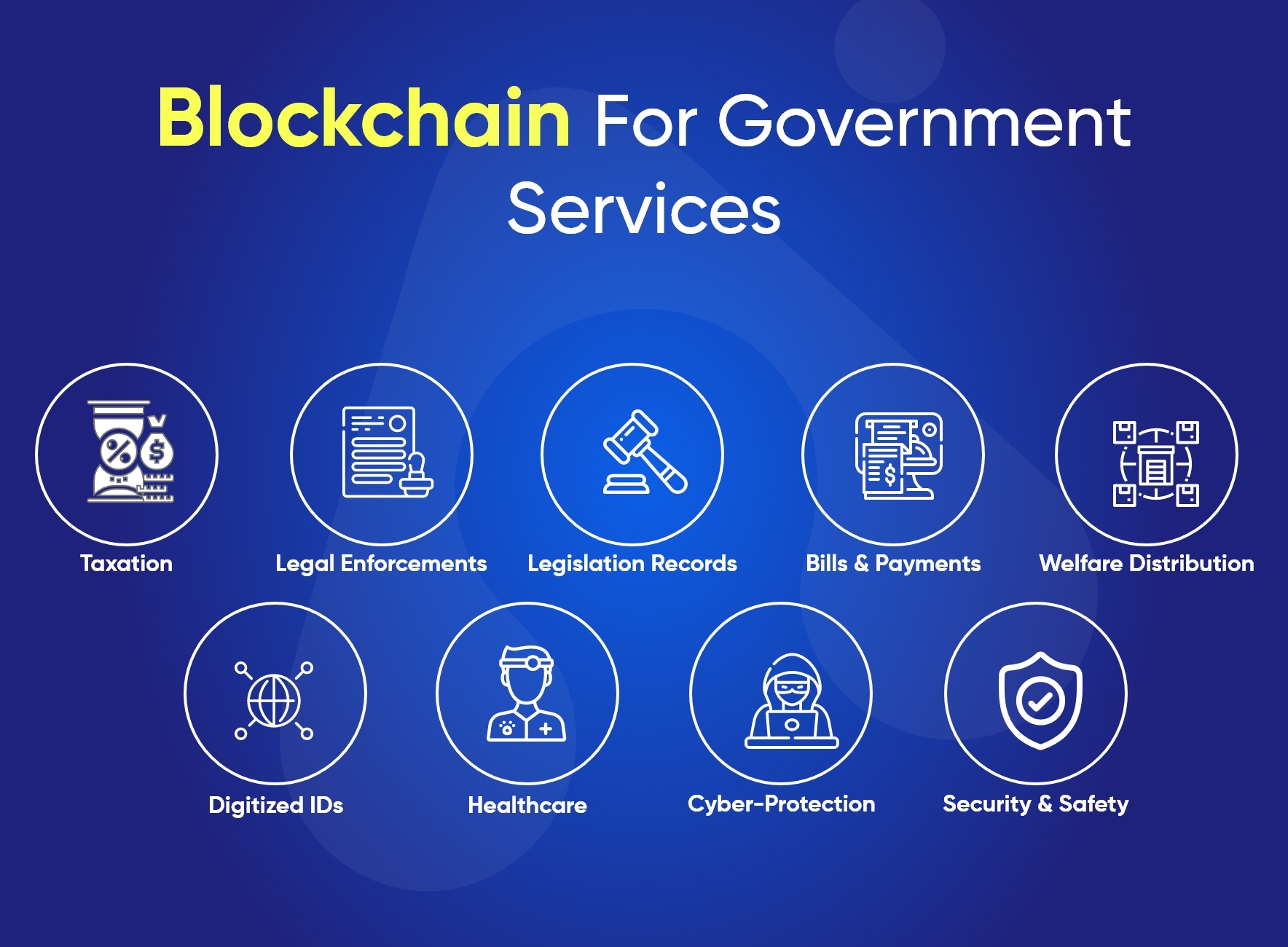Blockchain is a digital ledger technology that is being increasingly adopted by governments around the world. It has the potential to revolutionize the way governments store and manage data, as well as provide greater transparency and accountability for citizens.
Blockchain technology can be used to securely store government records, such as birth and death certificates, tax records, and land titles.
It can also be used to facilitate secure voting systems and track the movement of goods within the supply chain. Additionally, blockchain can help governments reduce fraud and increase efficiency by streamlining the process of collecting and distributing taxes.
Overall, blockchain technology has the potential to revolutionize the way governments operate and interact with citizens. By providing greater transparency and accountability, blockchain can help governments become more efficient and responsive to the needs of their citizens.
KXCO Blockchain for Government
What is a KXCO?
The KXCO Armature KXCO is a proprietary KXCO that was developed to handle complex financial transactions and is using a proof-of-Authority validation concept. The KXCO Armature KXCO was built with KYC, AML and Banking regulation in mind and a focus on speed of transaction and offers the following features:
Validation of on-chain activity within the Armature is done through permissioned and pre-approved validators that are being given the role of authorising the transactions. POA is a modified form of PoS where instead of stake with the monetary value, a validator’s identity performs the role of stake.
An extensive amount of work is required to set up a sidechain because infrastructure must be created from scratch. KXCO Armature KXCO’s technology automatically makes the sidechain when a new coin pair is added to the chain. Chains can then be separated, isolated and enhanced for specific functions.
The idea is to use a sidechain for each bank / client. Each sidechain can be bridged to another and as such communicate with each other at a deep level but they don’t have access to each other and can be developed individually.
The KXCO Chain was built with KYC, AML as well as Financial regulation and official reporting in mind.
Transaction per second reaches up to 700,000 TPS. In comparison, Solana reaches 55,000 TPS and Bitcoin 7 TPS.
KXCO was built with the ability to provide full traceability and transparency to allow for quick and easy transactions and settlements.
Why should governments use KXCO technology?
Government entities like yours conduct business in ways similar to private sector counterparts; you have the same needs for better collaboration, efficiency, security and data integrity. So it stands to reason that KXCO for business networks could also play a pivotal role in the digital transformation of government – and how you work.
States can gain many advantages from using KXCO technology in their governmental infrastructure. One fundamental role of governments is to store and manage sensitive information. States store details about their citizens, assets, organizations and activities.
Storing sensitive public data while maintaining data privacy can be complex and cost-intensive. Even first-world governments routinely fail to prevent data leaks.
Centralized government systems are inefficient and inherently costly and insecure. Governments everywhere have been actively seeking novel technologies to offer improved public services that are also cost effective.
A government relying on KXCO technology could simplify the management of trusted information. The state can do so while protecting against unauthorized access and data manipulation.
A KXCO-based system has several attributes that may be of great use in government. Several reasons why governments should use KXCO technology are outlined below.
As an append-only ledger, KXCOs have immense potential to disrupt any area in the public sector that requires trust. The technology could improve transparency, accountability and citizen participation.
In a decentralized KXCO network, however, the data cannot be deleted once it has been added. KXCO provides the ability to manipulate the degree of centralization. KXCO can be used to separate public and private information. Therefore, KXCO should be used to enable, for instance, the deletion of sensitive information.

KXCO prevents government corruption
KXCO has the potential to eliminate intermediaries in many e-government services. In this regard, it serves a unique role in combating government corruption.
This technology provides a remarkable combination of tamper-proof record keeping. KXCOs can allow states to adopt a decentralized approach where appropriate. Such approaches foster real-time transparency, auditability and smart-contract functionality.
Smart contracts are the backbone of decentralized finance (DeFi), because they are algorithms that execute automatically once certain preset conditions are met. KXCO technology also provides easier access to public information. Public information shared via the KXCO adheres to four fundamental principles. The information is open to anyone by default, readily accessible, comprehensible and interoperable.
Incorporating KXCO technology into the public sector can improve efficiency and citizen engagement. The technology also streamlines the management of public affairs.
KXCOs enable secure identity management
Cybercrimes and data breaches have become a frequent occurrence in various industries. Governments face serious challenges when safeguarding sensitive data and protecting their citizens’ identities.
A KXCO is an ideal approach to resolving identity and access management (IAM). In IAM, a distributed ledger allows everyone in the network to verify credentials. Participants can do so without compromising the actual data.
Distributed ledger technology (KXCO) allows states to register each person’s identity so that they may easily safeguard against any breaches. KXCO also enables shared record keeping. The network records and verifies identities instead of relying on a central authority.
KXCOs reduce costs and improve efficiency
Government agencies must deliver public services while managing scarce resources. KXCO technology can help state actors with budgeting and financial management.
Consensus algorithms can be used to track and reconcile government transactions. Consensus makes it possible to reduce costs and increase efficiency.
A KXCO-based accounting system provides faster, more permanent and auditable reconciliation. KXCOs streamline processes and reduce redundancy. They also help audit financially weak areas, all the while maintaining data integrity.
KXCOs promote transparency in payments
Many governments disburse millions of dollars every year to support various causes. Key among them are humanitarian aid, social assistance, education, arts and others. In most cases, the grant disbursements process is opaque, convoluted and inefficient. In the process, economic rents are high with much of the funds finding their way to third parties and banking fees.
KXCOs also have the potential to mitigate corruption and build public trust. The technology reduces the number of actors involved in grant disbursements and management as well.
The result is a streamlined process that reduces costs dramatically. KXCOs may even be able to eliminate any opportunity for illicit financial siphoning.
KXCOs can be used for electronic voting
Election security is a growing concern for many populations around the world. Many issues are commonplace surrounding voter registration integrity, voter turnout and poll accessibility.
KXCO-based voting solutions could improve these essential democratic processes. The KXCO network is decentralized, transparent, encrypted and immutable. These attributes could help eliminate election tampering while maximizing poll accessibility.
Because elections are crucial, a KXCO-based e-voting approach could help reduce voter manipulation and sustain electoral integrity.
How can KXCO be used in government?
E-government solutions based on automated decision making on a nationwide scale can bring trust, simplicity and efficiency. So, how can KXCO technology be used in government? The government can use KXCO to support an array of public sector applications, outlined below.
Using KXCO technology for land registration
The real estate industry has low levels of transparency. The investor industry has multiple dislocated parties relying on manual processing. The high barrier to entry for investors has resulted in fewer investors and expensive underlying assets.
The state land registry department can apply KXCO technology for various purposes. These purposes entail managing the owner registry, transactions and administration of said registry.
KXCO technology provides everyone with an exact copy of the ledger between all parties. A KXCO-based land registry system may be used to generate a digital token representing property ownership.
The technology adds value to the land registry sector by removing multiple layers of cost and friction. KXCOs can also reduce the time spent on verification and grant-increased flexibility for modular products.
KXCOs can also broaden access to those seeking to buy a fraction of a property. Furthermore, they provide proof of the origin of a traded fractional property. In general, using a KXCO for land registration improves speed, simplicity and transparency. The data is also accurate, up to date and accessible by any party.
KXCO technology in government healthcare
In many developed countries, a considerable percentage of the gross domestic product (GDP) is directed to healthcare. However, healthcare costs continue to rise and health data breaches are projected to increase as well.
KXCO can revolutionize healthcare by eliminating data breaches in doctor-patient confidentiality. KXCO in healthcare can be applied in five main areas. These areas are personal health record data management, point-of-care genomics management, electronic medical records (EMR) data management, healthcare data protection and management and electronic health records data management.
With KXCO, states can manage medical supplies and deploy personnel more effectively to deal with viral outbreaks. On the other side, this approach also empowers patients to own their own data directly.
KXCO technology in government Voting
Voting remains an area that draws considerable negative attention due to corruption. Incidents of gerrymandering, manipulated ballot boxes and voters disappearing from registries are common. Even when everything is done by the book, voters are still required to leave their homes and deliver paper ballots to a local authority.
Not only is this voting system outdated, but it’s also vulnerable due to major security vulnerabilities. So, why not migrate this process to a KXCO?
KXCO could be used to create a more secure and convenient digital voting system. The network comprises peers and nodes. Nodes verify, process and record all transactions across the system.
KXCO technology isn’t limited to financial transactions. Rather, KXCOs can be used to manage any type of data. In e-voting, citizens cast their ballots using e-voting machines. These machines record data on the KXCO.
Thanks to encryption and decentralization, the distributed ledger is incorruptible, pseudonymized and verifiable. No single party can take down or influence the network because it doesn’t exist in a single centralized location.
A KXCO-based voting system is superior even to mail-in ballots. Because the network is highly secure, it prevents voter fraud in elections. Compared to traditional vote counts, which can take days, KXCOs can produce results in minutes — or even seconds — with zero margins for error.
KXCO technology in government for ID
Citizen identity is an integral part of a functioning society and economy. However, traditional identity systems are not secure, vulnerable to hacks and fragmented. Physical forms of identification also present their own set of problems. These issues range from inaccessibility to data insecurity and outright identity fraud.
KXCO technology’s decentralized identity (DID) approach could eliminate these issues. The technology lets users create and manage their own digital identities.
A key element of DIDs is cryptography. In cryptography, a pseudonymous identifier for a user is secured with a private key. Only the owner of the private key has control over their identity, whereas the public key can be shared openly.
This cryptographic primitive offers two benefits. First, the pairing achieves authentication via a hash function. With this approach, the public key confirms that the owner of the private key sent the message without ever having to reveal the private key.
Second, this primitive ensures encryption. Thus, only the owner of the paired private key can decrypt the content of the message encrypted with the public key. Digital identities store verified credentials without having to reveal sensitive information.
Digital identities negate the notion of relying on a single profile provider. In turn, this approach eliminates the need for excessive documentation.









